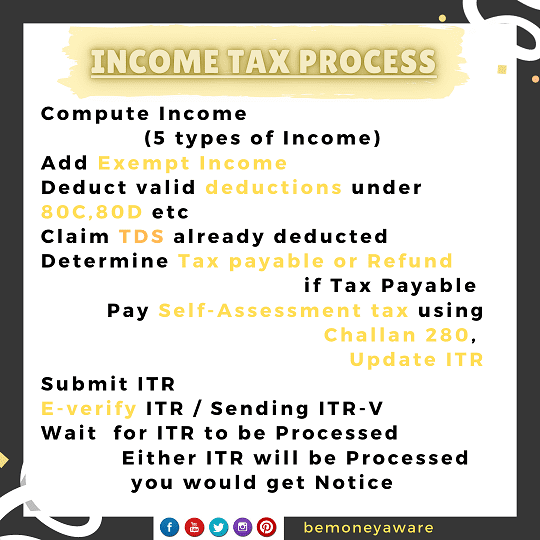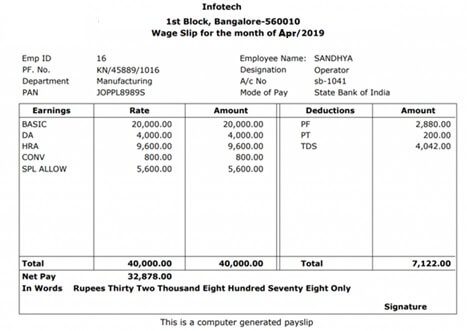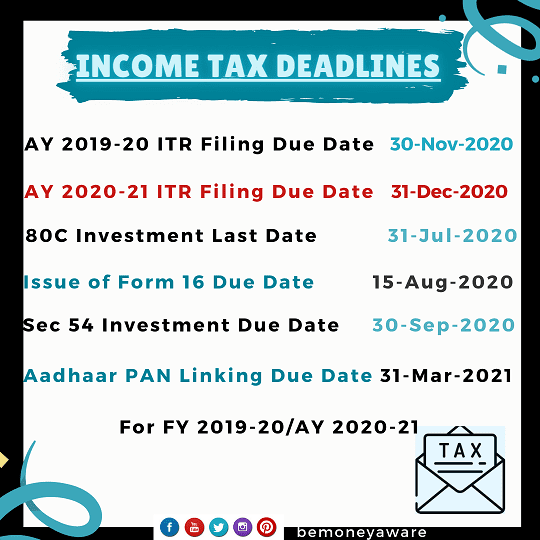If you have income there is a tax and you may be required to file Income Tax Return(ITR). To understand Income Tax we need to understand what is Income, Income Tax slabs, Types of Income, the tax on different types of Income, dates related to Income Tax, tax cut i.e TDS, how to see TDS, how and when to pay self-assessment tax, how to pay the tax due, how to File ITR. Filing ITR is not rocket science but it is more than uploading just Form 16 in the website. Whether you file ITR yourself or your CA, tax lawyer or website files ITR you should know some concepts of Income Tax you should be aware of. We have come up with a workbook on Income Tax which explains the various concepts related to Income Tax, We go through the filing of ITR1 for sample data. So as to make Income Tax Less Taxing! This article shows the excerpts from the workbook and how one can get the workbook.
“In this world, nothing can be said to be certain, except death and taxes.” Benjamin Franklin
Our Income Tax course will teach you everything you need to know about income tax in simple terms that are easy to understand. Learn Income Tax Course
Table of Contents
How to get the BeIncomeTaxAware workbook?
Follow Tax-related information on our new Instagram channel BeIncomeTaxAware.
The workbook is available for sale for Rs 199. Buy pdf version at InstaMojo
You can find all about Income Tax at Understand Income Tax: What is Income Tax,TDS, Form 16, Challan 280
You can find all about Filing Income Tax Return (ITR) at How to file ITR Income Tax Return, Process, Income Tax Notices
The income earned between 1 Apr 2020 to 31 Mar 2021, called FY 2020-21, will be assessed for tax in the AY 2021-22 The last date for filing returns is 31 Dec 2021. Our article Income Tax for FY 2020-21 or AY 2021-22 talks about it in detail.

The process of Income Tax
Financial Year/ Assessment Year
In India, we follow the English Calendar from 1 Jan to 31 Dec
But for Income Tax, we use Financial Year(FY) which is from 1 April and 31 March.
The income in one Financial Year earned gets assessed(checked) in the next Financial year which is called Assessment year(AY)
Income earned btw Apr 2019- 31 Mar 2020 will be assessed after 1 Apr 2020.
So FY becomes 2019–20 while AY is 2020–21
The due date for filing ITR for Individuals for FY 2019-20/AY 2020-21 is 31 Dec 2020 (due to Covid)
Income Tax Return(ITR), Form 26AS, Income Tax Notices, Form16, Challan 280 use Assessment Year
Question: For income earned between 1 Apr 2019 to 31 Mar 2020
What is the FY?
What is AY?
By when do you have to file ITR?
Question: What is FY/AY for this ITR?
Question of Find the FY/AY in the following documents

What is The FY/AY in Form 26AS, ITR, Income Tax notice
What are Income Tax Slabs?
Not everyone in India pays the same Income Tax.
A percentage of tax is charged based on total income, the more the income more the tax. Hence income tax is called progressive.
Tax rates are on the range of income levels which are called as Tax slabs. For example, those earning between 5,00,001 to 10,00,000 are in 20% tax slab. Which means that they have to pay 20% of tax on their income. But they also get the benefit of lower tax slabs. So one with 20% tax slab gets exemption limit of 2.5 lakh, the benefit of 5% tax on income upto 5 lakh, and then 20% tax slab on income above 5 lakh. We have explained it with an example.
Note: Over and above tax, cess & surcharge are also charged.
Not only Tax slabs depend on your total income but also on the age. Your age (less than 60, Senior Citizen (between 60 – 80 years), Super-Senior(more than 80
Income Tax slabs usually change from year to year. Finance Minister announces them during the budget on 1 Feb.
Details in our article Income Tax Slabs
Video on Income Tax Slabs
Income Tax Slabs for FY 2019-20 or AY 2020-21 is
| Tax | MEN and WOMEN | SENIOR CITIZEN(Between 60 yrs to 80 yrs) | For Very Senior Citizens(Above 80 years) |
| Basic Exemption | 250000 | 300000 | 500000 |
| 5% tax | 250001 to 500000 | 300001 to 500000 | – |
| 20% tax | 500001 to 1000000 | 500001 to 1000000 | 500001 to 1000000 |
| 30% tax | above 1000000 | above 1000000 | above 1000000 |
| Surcharge | 10% of tax where total income exceeds Rs. 50 lakh 15% of tax where total income exceeds Rs. 1 crore
25% on income between Rs 2 crores to Rs 5 crores 37% on income between Rs 5 crores to Rs 10 crores |
||
| Education Cess | Health & Education cess: 4% of tax plus surcharge | ||
| Tax Rebate | Rs 12,500 for income up to 5 lakh under/section 87A | ||
What is 30% tax slab
30% Tax Slab is for total income Above ₹ 10,00,000.
If a person has a total income of 14 lakh. Then His income slab = 30%
Income chargeable at 0% (Exemption limit) 2,50,000
Income chargeable at 5% of 250000(5 lakh -2.5 lakh) = 12,500
Income chargeable at 20% of 5 lakh(10 lakh – 5 lakh) =1,00,000
Income chargeable at 30% of 8 lakh(18 lakh – 10 lakh) =2,40,000
So Total Income tax is 12,500 + 1,00,000+2,40,000=3,52,500
On tax he needs to pay surcharge (0%) and education cess (total 4%) = 4% of 3,52,500= 14,100
Total tax he is liable to pay = 14,100+3,52,500 = 3,66,600
Question: Shyam has Income of Rs 7,00,000. What is his Income Tax Slab? How much tax would he have to pay?
As his income is between 5 lakh to 10 lakh he is in 20% tax slab.
Ans: 52,500+2,100=54,600
Question on Rebate
Q8. A resident individual (whose net income does not exceed Rs. 5,00,000) can avail rebate under section 87A. It is deductible from income-tax before calculating education cess. The amount of rebate is 100 per cent of income-tax or Rs. _______, whichever is less. (a) 10,000 (b) 12,500 (c) 2,000 (d) 1,000
Question on Type of Income?
Bharti is a salaried employee below 60 years of age, resident of India.
Income from salary is Rs 8,00,000.
She received Rs 4,000 as interest from her saving bank account.
She has a Fixed Deposit of 5 lakhs in which she receives 33,710.20 as interest in FY 2019-20. (Her FD will mature on 3 Feb 2021).
She has invested in ELSS funds of amount 50,000 Rs
She lives in a rented house and gets HRA.
What types of Income does Bharti have?
| Income from Salary | |
| Income from House property | – |
| Income from Capital Gains | – |
| Income from Business or Profession | – |
| Income from other sources |
Video on Income from Salary
Question on Salary
. Look at the Payslip given below
- What is the Basic salary?
- What are the Allowances that Sandhya gets?
- What are the deductions?
- What are the benefits
- How much TDS is deducted?

Understanding payslip, Basic, HRA, PF
Overview of Income from House Property
- If you have given a house on rent, then rental income is income from house property.
- If your house is vacant it is expected to earn Rental Income.
- If you have taken a home loan to buy the property, then the interest is negative income from house property. It is Tax Deduction on Home Loan Interest under Section 24.
- To calculate How much is income from House Property one needs to understand the concept of Self Occupied & Let Out house property
- Income from House Property is added to calculate Total income which is taxed at the slab rate applicable to you
- If you own more than one house, you cannot file ITR1.
- If salaried, you can submit details of Income from House Property to your employer. Our article Submitting Home Loan Interest Proof to the Employer with PAN of Lender explains it in detail.
- If details submitted to the employer, it would appear in your Form 16. And your TDS might be less if you have negative income from house property. But we still need to show that in your ITR
- If income from house property details is not submitted to the employer, then you can claim it while filing ITR. In that case, you might have a refund
Question on How to show Income from House Property for Self-Occupied House
Mukund has taken a home loan of Rs 40,00,000 (40 lakh) for 20 years @10.5% so his loan EMI is Rs 39,935 For the financial year 2019-20, he paid 4,79,222 which includes a payment of Rs. 65,493 towards principal and Rs 4,13,730 towards interest.
So, what is his total Income from House property? How will you show it in in the ITR1?

Show Self Occupied property in ITR1 with home loan interest
Question on How to show Income from House Property for Let Out House
Ravi owns a house which is let out for a rent of Rs 11,000 per month. The municipal value of this house is Rs 1,30,000 p.a, fair rental value is Rs 1,10,000 p.a, standard rent is Rs 1,20,000 p.a . If municipal taxes are 10% of the municipal evaluation. Interest on borrowed capital was Rs 40,000 for the year.
Fill in ITR1 in Excel for Income from Let Out House Property?
Tax Deductions
Every citizen wants to increase the income and at the same time pay lesser tax. Deductions are the amounts Income Tax Department allows you to reduce your Income. So less the income, less the tax liability.
Gross Income = Sum of All heads of Income
Taxable Income = Gross Income – Deductions
These tax deductions are given under various sections ex 80C, 80D, 80G
There is a limit to what one can claim, for example, for 80C one can claim only up to 1.5 lakh
These deductions sections, limits change every financial year. And the changes are announced in the annual budget.
To claim deductions, one needs to invest in a specific financial instrument.
For example, to claim 80D one needs to buy a health insurance policy.
To claim 80C one can invest in one or more of: EPF, PPF, Buy Life insurance policy, invest in ELSS funds, children tuition fees.
Various exemptions, sections, amount are discussed in the next section
Example of How Tax deduction help in saving Tax
Bharti is a salaried employee below 60 years of age. Her Basic salary is Rs 8,00,000. TDS deducted by her employee is 80,000. She has received Rs 6,000 as interest from bank of saving bank account. She has made FD for which she received interest of Rs 8000. Her contribution towards Employee Provident Fund is Rs 34,000, bought a LIC policy for which she is paying premium of Rs 6000.
Income from salary Rs. 8,00,000
Income from other sources
Interest on Saving Bank Account Rs 6,000
Interest from FD Rs 8,000
Total Income 8,14,000
Deductions:
Under Section 80C :
Employee Provident Fund 34,000
LIC premium 6,000
Total Taxable Income 7,74,000
Tax Rebate
Tax rebate is another facility given by Income Tax Department which helps in saving tax. An individual resident of India, (including Senior Citizens) whose total taxable income does not exceed 5 lakh rupees is entitled to a rebate of Rs 12,500 for FY 2019-20.
Our article Income Tax Rebate under Section 87A covers it in detail
- Income Tax Rebate under Section 87A is only available to Resident Individuals including Senior Citizens.
- There is no benefit of this Rebate to Super-Senior Citizens i.e. Individuals above 80 years of age as their Income up to Rs 5 Lakh is already exempted from
- Income Tax Rebate is allowed before the levy of Education Cess and Secondary and Higher Education Cess(SHEC). In other words, Education Cess and SHEC would be levied on the tax payable after allowing for Income Tax Rebate.
- Total income before cess should not be more than a defined limit, which is 5 lakh for FY 2019-20.
- The amount of tax rebate under section 87A is restricted to a maximum amount of Rs 12,500 for FY 2019-20. If the computed tax payable is less than Rs 12,500, say Rs.1,500 the tax rebate shall be limited to that lower amount ie Rs 1,500.
Question on Tax Rebate
How much tax rebate can Resident Indians Shyam, Hari & Mohan claim?
| Name | Shyam | Hari | Mohan |
| Age | Less than 60 years | Between 60-80 years | Above 80 years |
| Total taxable income
After deductions (Rs) |
5,00,000 | 5,00,000 | 5,00,000 |
| Tax due | 12,500 | 10,000 | 0 |
| Rebate under 87A | |||
| Actual Tax Liability |
How to fill ITR1?
We go through the whole filing of ITR1 for sample data. Every sep
Given below is the Form 16 of Sanchit and we will use that to file ITR1 for the financial year 2019-20 or Assessment Year 2020-2021
As discussed earlier, ITR-1 has to be used by those individuals who have income from salary/pension, one house property, and income from other sources and total income does not exceed Rs 50 lakh.
Before you start to file your ITR, you should collect the required documents such as Form-16, interest certificates, details of interest earned on all the savings account held with a bank or post office and so on.
Be Income Tax Aware On Instagram
Follow Tax-related information on our new Instagram channel BeIncomeTaxAware.

Deadlines of Income Tax that you should be aware of
Related articles:
- Understand Income Tax: What is Income Tax,TDS, Form 16, Challan 280
- How to file ITR Income Tax Return, Process, Income Tax Notices
- Income Tax for FY 2019-20 or AY 2020-21




Very nice
Your content is great. Thank you sir for sharing this article.
kindly let me know the price of the be aware of the income tax workbook a practical approach.